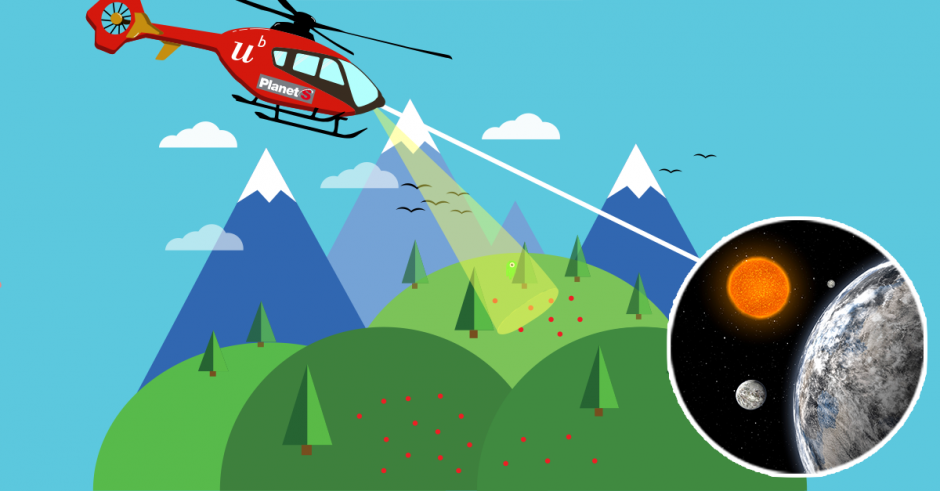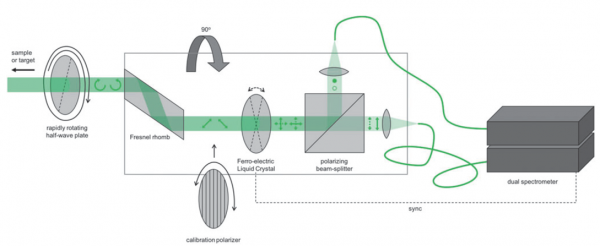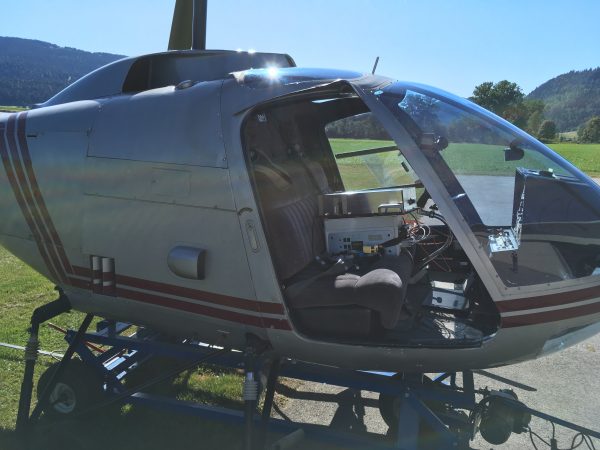Scientists detect signatures of life remotely

It could be a milestone on the path to detecting life on other planets: Scientists under the leadership of the University of Bern and of the National Centre of Competence in Research (NCCR) PlanetS detect a key molecular property of all living organisms from a helicopter flying several kilometers above ground. The measurement technology could also open up opportunities for remote sensing of the Earth.
Left hands and right hands are almost perfect mirror images of each other. But whatever way they are twisted and turned, they cannot be superimposed onto each other. This is why the left glove simply won’t fit the right hand as well as it fits the left. In science, this property is referred to as chirality.

Jonas Kühn is a postdoctoral researcher at the University of Bern, a member of the NCCR PlanetS and the MERMOZ project manager. Image Credit: Jonas Kühn
Just like hands are chiral, molecules can be chiral, too. In fact, most molecules in the cells of living organisms, such as DNA, are chiral. Unlike hands, however, that usually come in pairs of left and right, the molecules of life almost exclusively occur in either their “left-handed” or their “right-handed” version. They are homochiral, as researchers say. Why that is, is still not clear. But this molecular homochirality is a characteristic property of life, a so-called biosignature.
As part of the MERMOZ project, an international team led by the University of Bern and the National Centre of Competence in Research NCCR PlanetS, has now succeeded in detecting this signature from a distance of 2 kilometers and at a velocity of 70 kph. Jonas Kühn, MERMOZ project manager of the University of Bern and co-author of the study that has just been published in the journal Astronomy and Astrophysics, says: “The significant advance is that these measurements have been performed in a platform that was moving, vibrating and that we still detected these biosignatures in a matter of seconds.”
An instrument that recognizes living matter

Lucas Patty is aa postdoctoral researcher at the University of Bern, member of the NCCR PlanetS and part of the MERMOZ project. Image Credit: Lucas Patty
“When light is reflected by biological matter, a part of the light’s electromagnetic waves will travel in either clockwise or counterclockwise spirals. This phenomenon is called circular polarization and is caused by the biological matter’s homochirality. Similar spirals of light are not produced by abiotic non-living nature”, says the first author of the study Lucas Patty, who is a postdoctoral researcher at the University of Bern and member of the NCCR PlanetS.
Measuring this circular polarization, however, is challenging. The signal is quite faint and typically makes up less than one percent of the light that is reflected. To measure it, the team developed a dedicated device called a spectropolarimeter. It consists of a camera equipped with special lenses and receivers capable of separating the circular polarization from the rest of the light.

A schematic illustration of the FlyPol spectropolarimeter. Image credit: Lucas Patty.
Yet even with this elaborate device, the new results would have been impossible until recently. “Just 4 years ago, we could detect the signal only from a very close distance, around 20 cm, and needed to observe the same spot for several minutes to do so”, as Lucas Patty recalls. But the upgrades to the instrument he and his colleagues made, allow a much faster and stable detection, and the strength of the signature in circular polarisation persists even with distance. This rendered the instrument fit for the first ever aerial circular polarization measurements.

The spectropolarimeter instrument FlyPol aboard the helicopter, with which the team carried out the experiment. Image Credit: Jonas Kühn
Useful measurements on earth and in space
Using this upgraded instrument, dubbed FlyPol, they demonstrated that within mere seconds of measurements they could differentiate between grass fields, forests and urban areas from a fast moving helicopter. The measurements readily show living matter exhibiting the characteristic polarization signals, while roads, for example, do not show any significant circular polarization signals. With the current setup, they are even capable of detecting signals coming from algae in lakes.

Brice-Olivier Demory is a professor of astrophysics at the University of Bern and a member of the NCCR PlanetS. Image credit: Ramon Lehmann
After their successful tests, the scientists now look to go even further. “The next step we hope to take, is to perform similar detections from the International Space Station (ISS), looking down at the Earth. That will allow us to assess the detectability of planetary-scale biosignatures. This step will be decisive to enable the search for life in and beyond our Solar System using polarization “, as co-author Brice-Olivier Demory, professor of astrophysics at the University of Bern and member of the NCCR PlanetS says.
The sensitive observation of these circular polarization signals is not only important for future life detection missions. Lucas Patty explains: “Because the signal directly relates to the molecular composition of life and thus its functioning, it can also offer valuable complementary information in Earth remote sensing.” It can for instance provide information about deforestation or plant disease. It might even be possible to implement circular polarization in the monitoring of toxic algal blooms, of coral reefs and the effects of acidification thereon.
Publication details:
C.H. Lucas Patty et. Al., Biosignatures of the Earth I. Airborne spectropolarimetric detection of photosynthetic life, Astronomy & Astrophysics
https://doi.org/10.1051/0004-6361/202140845
Categories: External Newsletter, News

